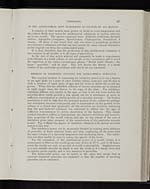Alexander Fleming (1881-1955)
On the antibacterial action of cultures of a penicillium with special reference to their use in the isolation of B. influenzae
PENICILLIN.
227
IS THE ANTIBACTERIAL BODY ELABORATED IN CULTURE BY ALL MOULDS?
A number of other moulds were grown in broth at room temperature and
the culture fluids were tested for antibacterial substances at various intervals
up to one month. The species examined were: Eidamia viridiscens,Botrytis
cineria, Aspergillus fumigatus, Sporotrichum, Cladosporium, Penicillium, 8
strains. Of these it was found that only one strain of penicillium produced
any inhibitory substance, and that one had exactly the same cultural characters
as the original one from the contaminated plate.
It is clear, therefore, that the production of this antibacterial substance is
not common to all moulds or to all types of penicillium.
In the rest of this article allusion will constantly be made to experiments
with filtrates of a broth culture of this mould, so for convenience and to avoid
the repetition of the rather cumbersome phrase “ Mould broth filtrate,” the
name “ penicillin ” will be used. This will denote the filtrate of a broth
culture of the particular penicillium with which we are concerned.
METHODS OF EXAMINING CULTURES FOR ANTIBACTERIAL SUBSTANCE.
The simplest method of examining for inhibitory power is to cut a furrow
in an agar plate (or a plate of other suitable culture material), and fill this in
with a mixture of equal parts of agar and the broth in which the mould has
grown. When this has solidified, cultures of various microbes can be streaked
at right angles from the furrow to the edge of the plate. The inhibitory
substance diffuses very rapidly in the agar, so that in the few hours before the
microbes show visible growth it has spread out for a centimetre or more in
sufficient concentration to inhibit growth of a sensitive microbe. On further
incubation it will be seen that the proximal portion of the culture for perhaps
one centimetre becomes transparent, and on examination of this portion of the
culture it is found that practically all the microbes are dissolved, indicating
that the anti-bacterial substance has continued to diffuse into the agar in
sufficient concentration to induce dissolution of the bacteria. This simple
method therefore suffices to demonstrate the bacterio-inhibitory and bacterio-
lytic properties of the mould culture, and also by the extent of the area of
inhibition gives some measure of the sensitiveness of the particular microbe
tested. Fig. 2 shows the degree of inhibition obtained with various microbes
tested in this way.
The inhibitory power can be accurately titrated by making serial dilutions
of penicillin in fresh nutrient broth, and then implanting all the tubes with
the same volume of a bacterial suspension and incubating them. The inhibi-
tion can then readily be seen by noting the opacity of the broth.
For the estimation of the antibacterial power of a mould culture it is
unnecessary to filter as the mould grows only slowly at 37° C., and in 24 hours,
when the results are read, no growth of mould is perceptible. Staphylococcus
is a very suitable microbe on which to test the broth as it is hardy, lives well
in culture, grows rapidly, and is very sensitive to penicillin.
The bactericidal power can be tested in the same way except that at
intervals measured quantities are explanted so that the number of surviving
microbes can be estimated.


